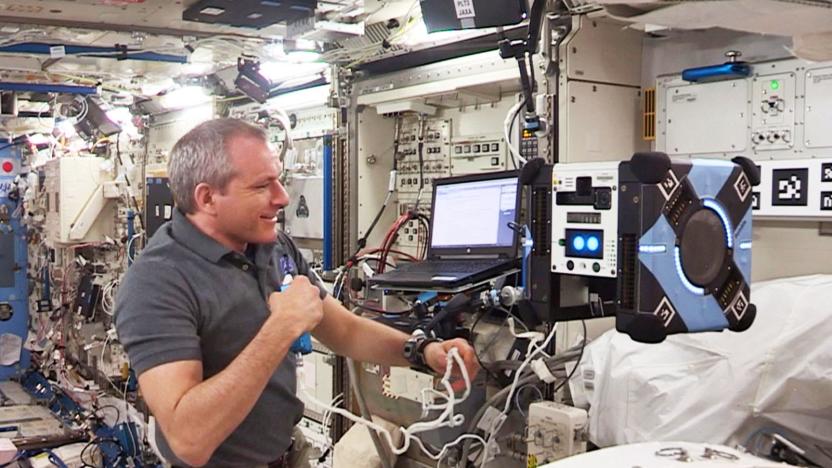astrobee
Latest

NASA's Astrobee cube robot flies in space for the first time
NASA's Astrobee cube robots are finally earning their space wings... in a manner of speaking. The agency has confirmed that one of the bots, Bumble, flew on its own for the first time aboard the International Space Station on June 14th. While the trip involved only basic movements like flying forward and rotating, it was proof machine could work in its intended microgravity environment.

NASA's Astrobee cube robot completes first hardware tests in space
NASA just inched closer to having robots take care of spacecraft. The agency recently completed its first hardware checkouts for Bumble (above), one of three Astrobee robots that will research automated caretaking aboard the International Space Station. The bot won't float on its own until later in the spring, but it should be good to go -- including for automated recharging at its docking station, Kibo.

NASA picks early winners for its ISS robot arm challenge
NASA's bid to crowdsource an arm for its Astrobee cube robot is starting to bear fruit. The agency and Freelancer.com have chosen early winners for the Astrobee Challenges Series, each of which has designed a key component for the robotic appendage. South African grad student Nino Wunderlin produced an attachment mechanism, while Filipino conceptual engineer Myrdal Manzano crafted a "smart" attachment system. Indian software engineer Amit Biswas, in turn, developed a simple deployment mechanism.

NASA wants your ideas for its cube robot's arm
Think you could build a better robot arm than NASA? You now have a chance to prove it. The agency is teaming up with Freelancer to crowdsource ideas for the arm on Astrobee, a cute cube robot that will float around the International Space Station monitoring conditions and supplies. The first phase will have NASA pick the top 30 entries that meet some basic criteria. If you pass muster, you'll be asked to break down the architecture options for your design. Do that and NASA will run another crowdsourcing effort to solicit ideas for the subcomponents from those 30 submissions. Phew.
